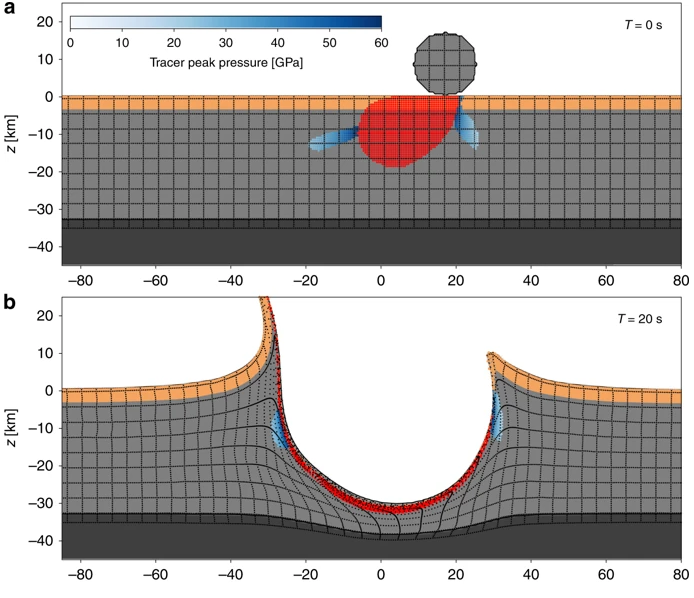The colossal space rock that wiped out the dinosaurs 66 million years ago collided with Earth at the perfect angle for death and destruction, shrouding the planet in a catastrophic “nuclear winter,” a new study has found.
The fearsome event that exterminated some three-quarters of all life on Earth was especially deadly thanks to the asteroid’s flight path, according to researchers at Imperial College London, who ran 3D simulations of the Chicxulub impact to better understand its apocalyptic aftermath. Their findings were published in the journal Nature Communications on Tuesday.
“The asteroid strike unleashed an incredible amount of climate-changing gases into the atmosphere, triggering a chain of events that led to the extinction of the dinosaurs,” said Gareth Collins of the Imperial College, who headed up the research team. “This was likely worsened by the fact that it struck at one of the deadliest possible angles.”
For the dinosaurs, the worst-case scenario is exactly what happened.
The asteroid hurdled to Earth at a steep angle of around 60 degrees, maximizing the amount of gas and “hazardous debris” launched into the upper atmosphere at the moment of collision – “the very thing that led to a nuclear winter,” Collins said. Kicking up a thick blanket of dust and smoke, the impact blackened the ancient skies, blotting out the sun and sending temperatures plummeting to inhospitable levels. Many of the organisms that survived the initial explosion perished in the artificial winter.

The scientists combined collision models with geological data from the impact site – located in modern-day Chicxulub, Mexico, which gave the 200 kilometer-wide crater its name – creating a 3D simulation of the event and its after effects for the first time.
“Despite being buried beneath nearly a kilometre of sedimentary rocks, it is remarkable that geophysical data reveals so much about the crater structure – enough to describe the direction and angle of the impact,” said Dr Auriol Rae of the University of Freiburg, a co-author on the study.
Previous studies have modeled the impact, but only looked at its early stages, rather than the chain of events it set off. Other research has also theorized that the asteroid came in at approximately 30 degrees, but the latest findings may offer a better explanation for why the event was so deadly, suggesting that a collision at a shallower or steeper angle would have been much less destructive.

Think your friends would be interested? Share this story!

